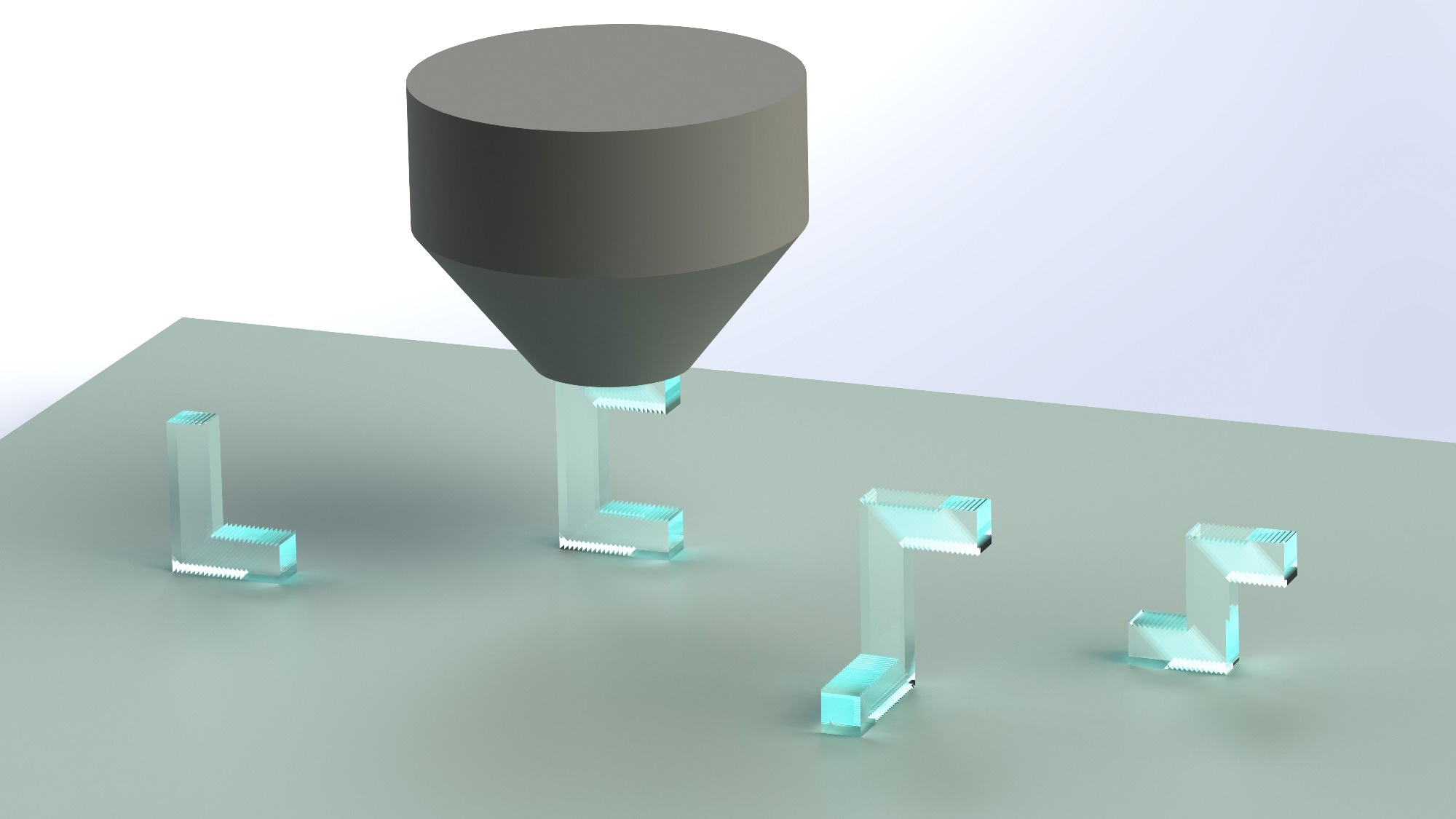A research team, co-led by researchers from the City University of Hong Kong (CityU), has achieved a significant breakthrough by transforming all-inorganic perovskites at room temperature while preserving their functional properties. This discovery highlights the potential of this semiconductor category for the development of advanced flexible electronics and energy systems in the coming years.

Morphing of all-inorganic perovskite micropillars into distinct geometries through multislip. Image Credit: © Dr Li Xiaocui / City University of Hong Kong
All-inorganic lead halide perovskites are gaining prominence as crucial semiconductor materials in the fields of energy conversion and optoelectronics due to their exceptional performance and improved environmental stability.
However, unlike metal materials or polymers, inorganic semiconductors are often brittle and hard to process. This strongly restricts their applications as optoelectronic products that must withstand mechanical stress and strain without losing their functionality.
Chen Fu-Rong, Associate Vice-President (Mainland Collaboration) and Chair Professor, Materials Science, City University of Hong Kong
Chen Fu-Rong co-led the study.
To address this challenge, Professor Chen, in collaboration with Professor Johnny Ho Chung-yin, Associate Head and Professor in the Department of Materials Science and Engineering (MSE), Professor Zhao Shijun from the Department of Mechanical Engineering (MNE) at CityU, and Professor Lu Yang, formerly from MNE and now at The University of Hong Kong (HKU), conducted an investigation into the deformability of all-inorganic perovskites, specifically CsPbX3, where X represents Cl, Br, or I ions.
Their research revealed that these perovskites can undergo significant shape changes at room temperature while preserving their functional properties, a groundbreaking achievement not previously observed in traditional inorganic semiconductors.
In their experiments, the research team initially synthesized single-crystal micropillars of CsPbX3, with varying diameters and widths ranging from 0.4 to 2 μm and lengths of 3 to 10 μm. This was achieved using the vapor-liquid-solid method. Subsequently, they conducted in situ compression experiments while utilizing a scanning electron microscope.
Their observations revealed that during the compression process, continuous slips of partial dislocations occurred on multiple slip systems within the CsPbX3 crystal lattice. This deformation mechanism, resembling a “domino-like” multi-slipping process, allowed the micropillars to undergo various distinctive shape changes without fracturing. These shapes included an upside-down L shape, a Z shape, and even a wine-glass shape.
Using an atomic-resolution transmission electron microscope (TEM), the research team uncovered that the atoms within the deformation zone maintained strong connections, ensuring the preservation of the material's functional properties without damage.
We also observed that the optoelectronic performance of the micropillars remained unaffected by the deformation. This demonstrates the potential of these materials for use in deformable optoelectronics.
Johnny Ho Chung-yin, Associate Head and Professor, Department of Materials Science and Engineering, City University of Hong Kong
The research team conducted additional electronic and structural analyses to delve into the underlying physical mechanisms responsible for this remarkable behavior.
“The secret of the morphing ability is the low-slip energy barrier, which ensures facile slips, and the strong Pb–X bonds, which maintain the crystal’s structural integrity and prevent cracking or cleaving,” said Professor Zhao Shijun.
Professor Zhao Shijun, whose expertise lies in computational materials properties, played a key role in the research. He noted that the bandgap, which is a critical energy parameter influencing the overall electrical characteristics of intrinsic semiconductors, remained unaltered within the CsPbX3 crystal lattice following deformation. This observation suggests that the electronic structure of the material remained unaffected by the deformations.
Our results demonstrated that all-inorganic CsPbX3 single crystals can be substantially deformed and facilely morphed into various shapes through multi-slipping under ambient conditions, without changing their crystalline integrity, lattice structure, or optoelectronic properties.
Chen Fu-Rong, Associate Vice-President (Mainland Collaboration) and Chair Professor, Materials Science, City University of Hong Kong
“This achievement represents a significant step towards designing and manufacturing innovative energy devices and deformable electronics. The underlying mechanism, uncovered by a TEM at the atomic level provides important implications for seeking other intrinsic ductile semiconductors,” he adds.
The research results have been published in the scientific journal Nature Materials.
The first authors of the study are Dr. Li Xiaocui, Dr. Meng You, and Dr. Li Wanpeng, postdocs in the MSE Department. The corresponding authors are Professor Chen, Professor Ho, Professor Zhao, and Professor Lu of HKU. Other collaborators are researchers from CityU and Zhejiang University.
Funding for this research was provided by the Hong Kong Research Grants Council (RGC), the City University of Hong Kong, and the National Natural Science Foundation of China/RGC Hong Kong Joint Research Scheme.
Journal Reference
Li, X., et al. (2023). Multislip-enabled morphing of all-inorganic perovskites. Nature Materials. doi.org/10.1038/s41563-023-01631-z.